Why AI-Native Products Are Breaking SaaS Economics
Cursor’s “unlimited” plan vanished overnight, leaving developers stunned and trust shattered. AI isn’t SaaS—real costs lurk behind every click. The Cursor crisis is a wake-up call for founders everywhere.
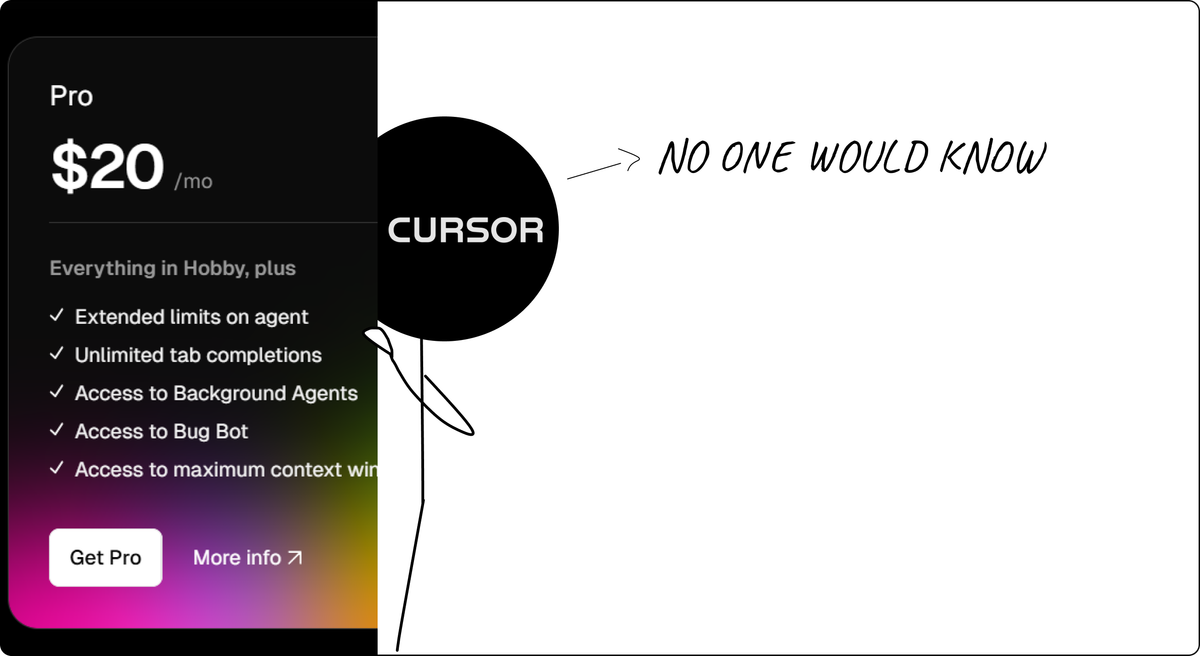
Traditional SaaS pricing models are fundamentally broken for AI-native products. The sooner founders accept this reality and embrace transparent, usage-based pricing, the better their chances of building sustainable businesses without destroying customer trust.
The Cursor Catastrophe: When "Unlimited" Meets Reality

The developer community is pissed. And rightfully so.
Cursor, the AI coding assistant that became the darling of developers worldwide, just pulled what users are calling a "rug pull" on their pricing. The outrage is real, visceral, and spreading like wildfire across Reddit, Twitter, and dev communities everywhere.
Here's what happened: Cursor's "unlimited" Pro plan suddenly wasn't unlimited anymore. Users who paid $20/month expecting 500 requests found themselves with roughly 225 Sonnet calls instead. Mid-billing cycle. Without clear warning.
As one furious developer put it: "Cursor just nuked the Pro plan. 'Unlimited' was never unlimited, 500 requests became ~225… Now they're gaslighting us with 'that system never existed.'"
The exodus began immediately. Annual subscribers felt especially betrayed – imagine paying $7,000 for a yearly subscription only to watch your allowance disappear overnight. One developer burned through 500 requests in a single day after the change, triggering overage charges they never saw coming.
But here's the thing that most of the outraged users are missing: Cursor's pricing crisis isn't really about greed or deception. It's about the fundamental impossibility of pricing AI-native products like traditional SaaS.
The Founder's Dilemma: When Every Success Costs Money
Let me take you inside the founder's mind for a moment, because I've been there. Building an AI-native product feels like trying to fill a bucket with a hole in the bottom – except the hole gets bigger every time someone uses your product successfully.
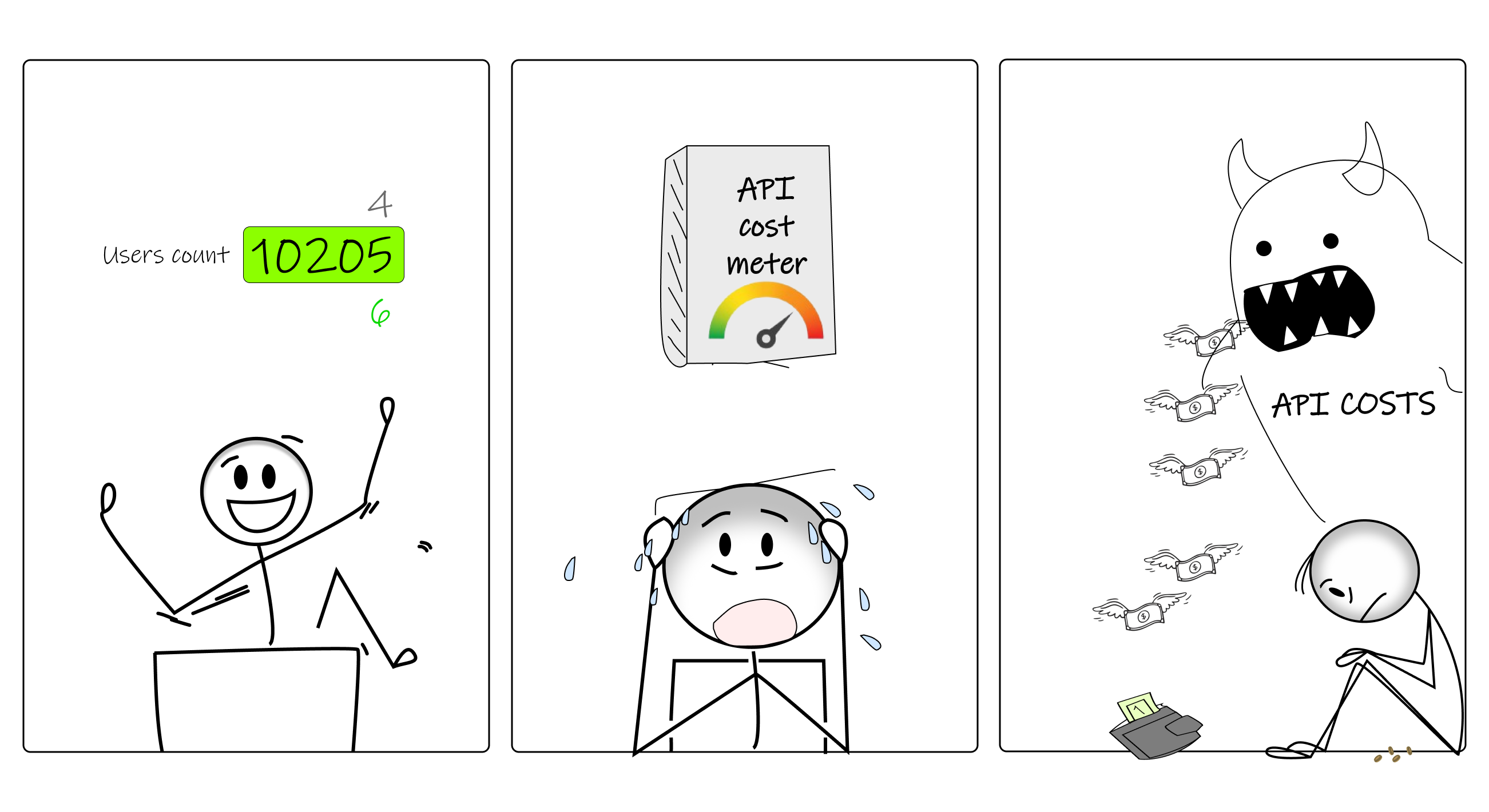
Traditional SaaS economics are beautifully simple:
- Build once, sell many times
- Marginal cost approaches zero
- More users = more profit
- Success scales linearly
AI-native economics are brutally different:
- Every user interaction costs money
- Marginal costs are immediate and real
- More usage can mean less profit
- Success can scale costs faster than revenue
Cursor's team tried to square this circle by offering "unlimited" usage while paying full API prices to OpenAI, Anthropic, and others. They were essentially subsidizing every power user, hoping that light users would balance out the heavy ones.
Spoiler alert: That math doesn't work when your most valuable customers are also your most expensive ones.
Here's Cursor's own explanation of their predicament:
Our recent pricing changes for individual plans were not communicated clearly, and we take full responsibility. We work hard to build tools you can trust, and these changes hurt that trust.
Cursor uses a combination of our custom models, as well as models from providers like OpenAI, Anthropic, Google, and xAI. For external models, we previously charged based on the number of requests made. There was a limit of 500 requests per month, with Sonnet models costing two requests.
New models can spend more tokens per request on longer-horizon tasks. Though most users' costs have stayed fairly constant, the hardest requests cost an order of magnitude more than simple ones. API-based pricing is the best way to reflect that.
They're not wrong. But they handled it terribly.
My $500 Wake-Up Call: When Reality Hits Your Credit Card
Let me share my own brutal awakening to AI pricing realities.
Out of the blue, I got an email from Anthropic that all my API credits were exhausted. My first thought? "This has to be a mistake. It can't be exhausted so soon."
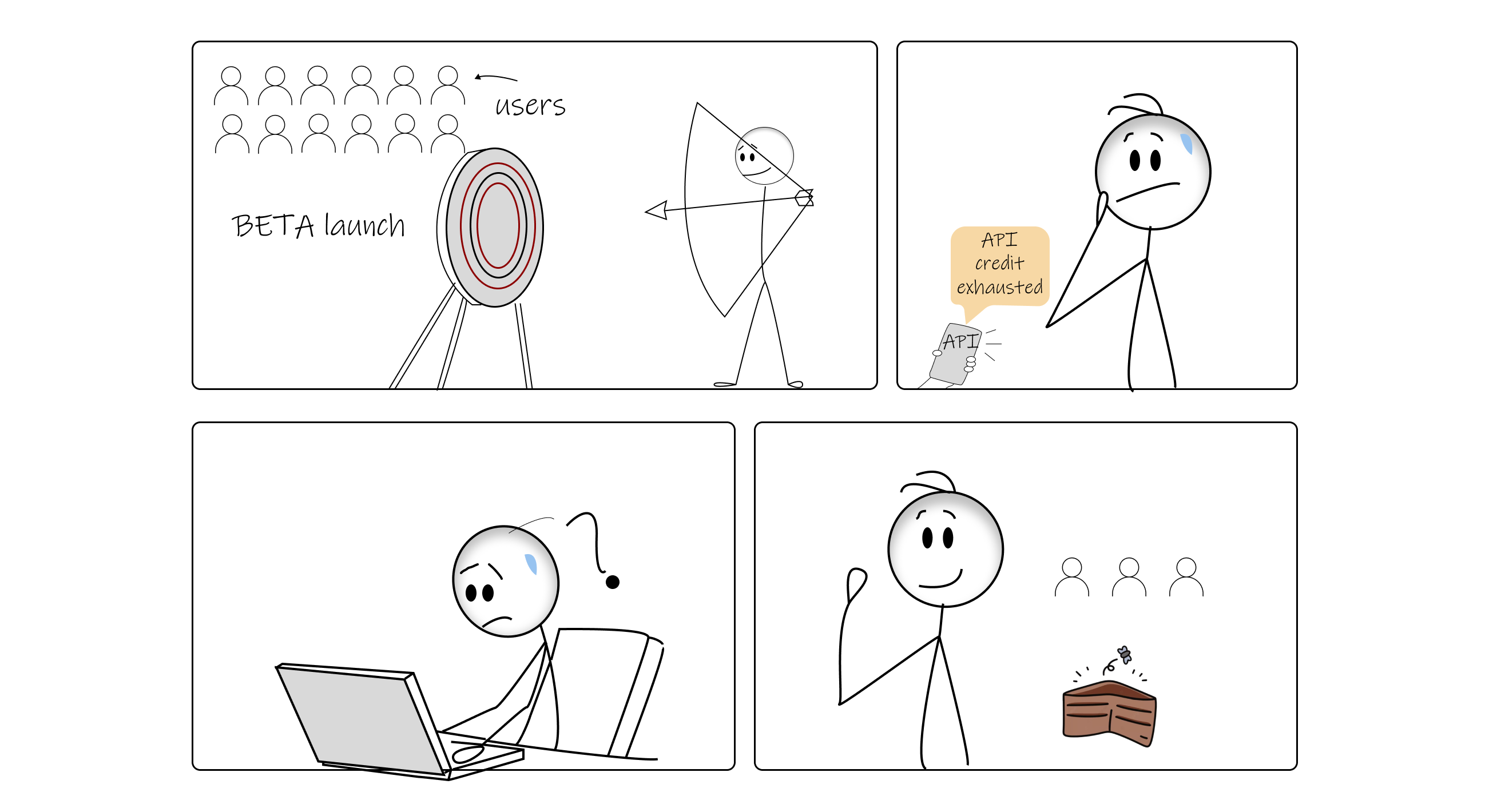
I rushed to the usage dashboard – everything seemed fine. Maybe my code was buggy? I spent the next hour debugging, but the code looked correct too. We had launched our beta just three days earlier to only 15 users. I'd budgeted $500 for the month – seemed reasonable for a beta test.
Those 15 users had generated over 200 multilingual website variations. Each generation required multiple AI API calls: translation, content adaptation, cultural localization, and SEO optimization. My carefully planned monthly budget was nearly gone in 72 hours.
That's when it hit me: this wasn't a bug or a mistake. This was the wake-up call I needed. Traditional SaaS pricing – the simple, familiar model that everyone understands – just doesn't work for AI-native products.
$500 might not sound like much to Valley founders burning venture capital, but for a bootstrapped founder from India counting every dollar and multiplying it by 80, it hits different. More importantly, the scaling implications were sobering: if 15 beta users could burn through $500 in three days, what would happen with 500 paying customers?
This is the reality of AI-native products: your marginal costs aren't zero. Every user interaction has a real, immediate cost. Every feature you add multiplies that cost. And here's the terrifying part – every successful customer can potentially cost you more money. This might be the rare case where building a great product could lead to bankruptcy faster.
The Uncomfortable Truth About AI Pricing
Most founders building AI products are lying to themselves about pricing. We want to believe we can offer "unlimited" features because that's what customers expect from software. We've been trained by decades of SaaS pricing to think storage and compute are essentially free.
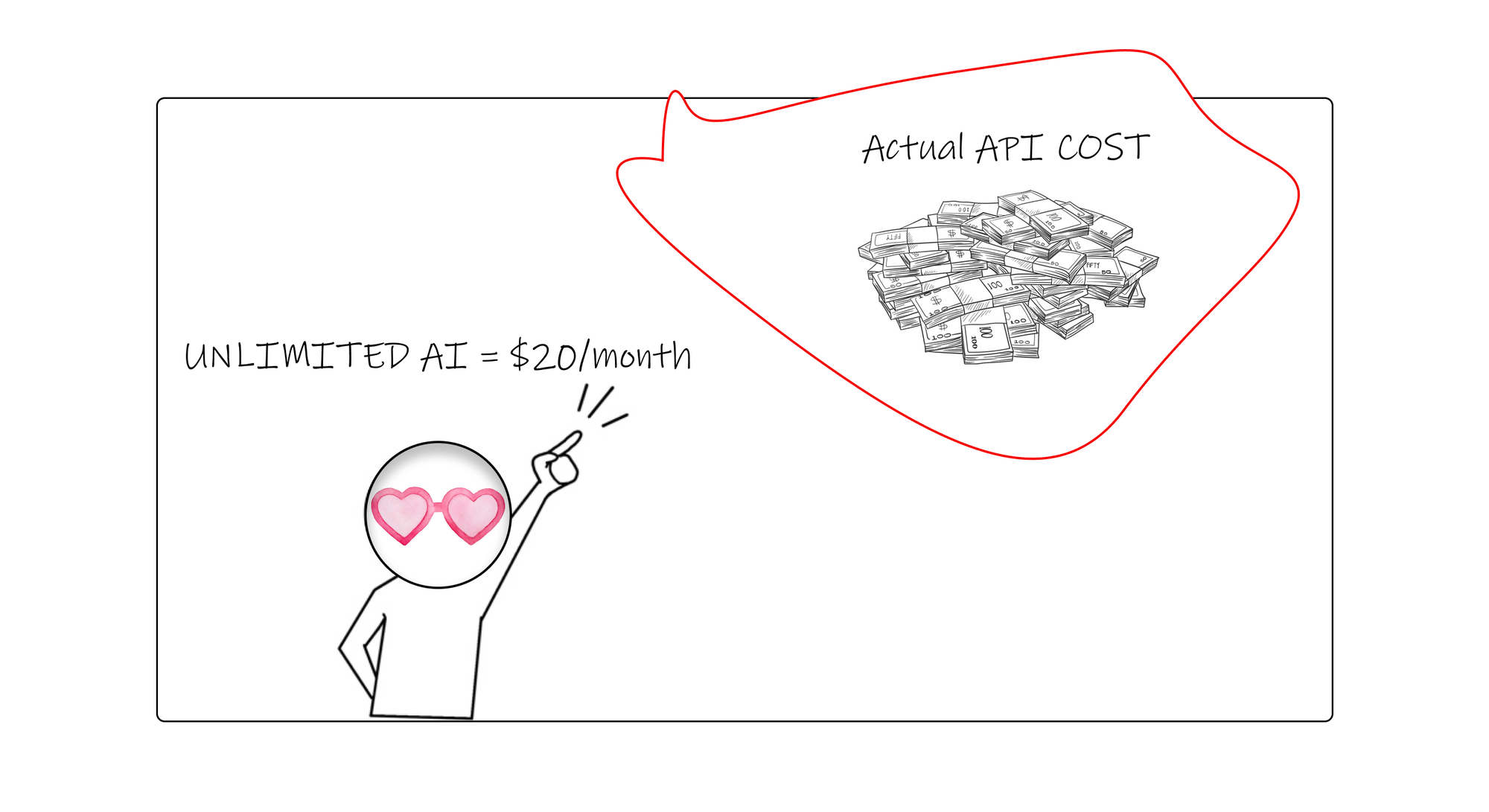
They're not. Not anymore.
When Claude Sonnet costs $3 per million input tokens and $15 per million output tokens, and your average user request consumes 50k tokens, you're looking at real money per interaction. A power user generating complex code or content can easily rack up $10+ in API costs per session.
Here's what I learned the hard way: trying to hide these costs behind "unlimited" plans is financial suicide. You're either:
- pricing so high that normal users subsidize power users (and pricing out your market)
- pricing reasonably and losing money on heavy usage (the Cursor problem)
- secretly implementing usage caps and hoping no one notices (the trust destroyer)
None of these strategies work long-term.
My Philosophy: Maximum Value, Transparent Pricing
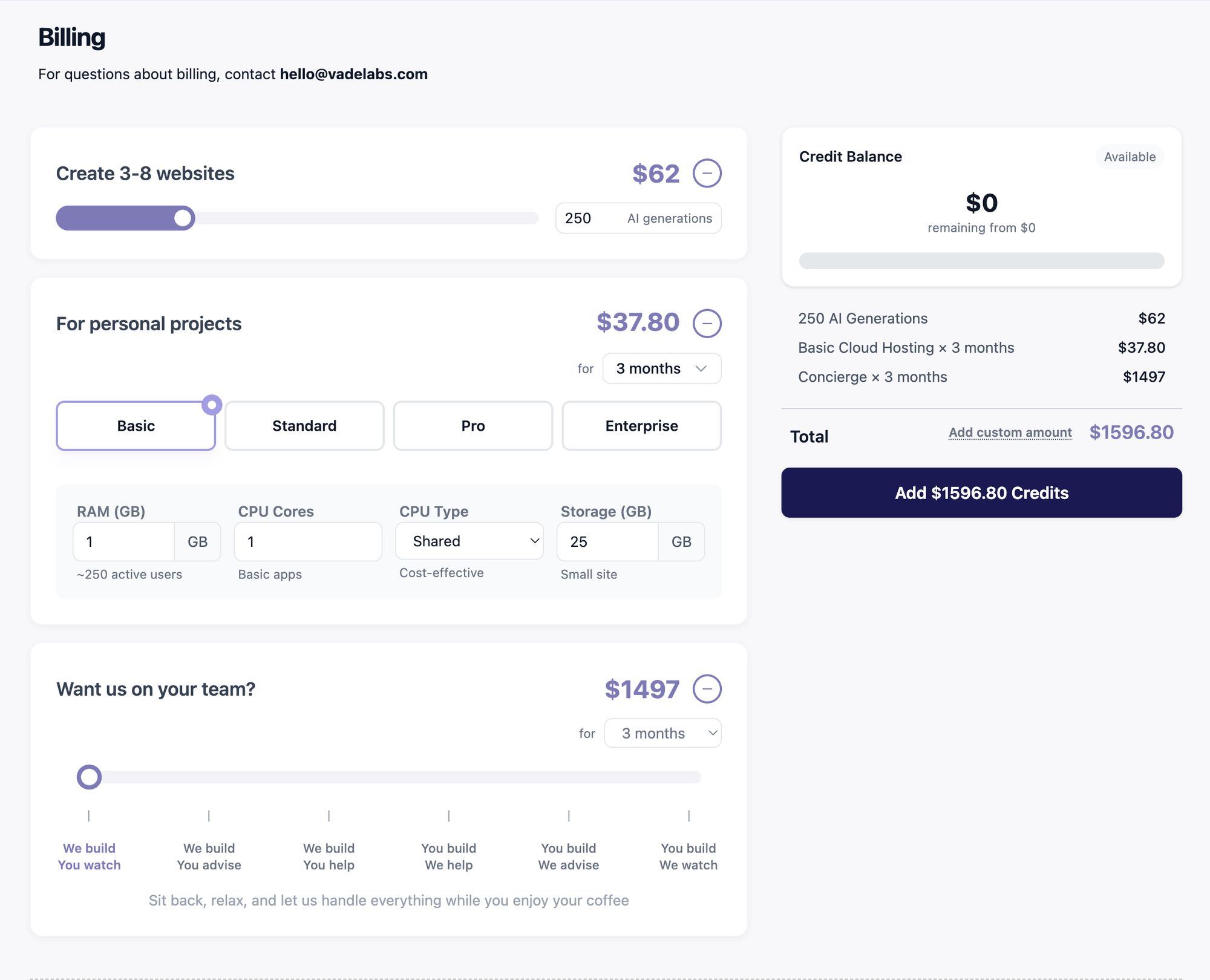
After my $500 wake-up call, I completely rewrote our pricing strategy. My philosophy became simple: create maximum value at minimum price possible, but be completely transparent about costs.
Here's what that looks like in practice:
Usage-Based Transparency
Instead of hiding behind "unlimited" plans, we show users exactly what they're consuming. Need AI generations? You buy credits. Need hosting? You buy credits. Need our concierge services? You buy credits.
Every credit spent has a clear value attached: faster website generation, better translations, more sophisticated optimizations. Users know what they're paying for and can control their spending.
Reasonable Margins, Not Highway Robbery
We don't mark up API costs 500%. We add a reasonable margin that covers our infrastructure, support, and development costs. Users can see the value we're adding beyond just raw AI access.
Scale Benefits Everyone
As we grow and negotiate better rates with AI providers, we pass those savings to customers. Bulk discounts mean lower credit costs for everyone. It's a virtuous cycle instead of a zero-sum game.
The Path Forward: Embracing the New Economics
The Cursor crisis is just the beginning. Every AI-native startup will face this reckoning eventually. You can either get ahead of it or get burned by it.
For founders building AI products, here's my advice:
1. Stop Pretending Costs Don't Exist
Your AI usage has real, immediate costs. Factor them into your pricing from day one. Don't wait until you're hemorrhaging money to acknowledge reality.
2. Educate Your Market
Users need to understand that AI-powered features aren't free. Be transparent about the value and the costs. Customers appreciate honesty more than they appreciate fake "unlimited" promises.
3. Build Pricing That Scales With Value
Charge based on usage, but make sure users get proportional value. If someone uses 10x more AI, they should get 10x more value, not just pay 10x more for the same outcome.
4. Invest in Efficiency
Every optimization that reduces your AI costs can be passed on to customers. Better prompting, smarter caching, more efficient models – these aren't just cost savings, they're competitive advantages.
5. Plan for Success
Your most successful customers will be your most expensive. Plan for this reality instead of being surprised by it. Build pricing that makes success profitable, not punitive.
The Cursor Lesson: Trust Is Everything
Cursor's technical execution was brilliant. Their AI integration was seamless. Their developer experience was best-in-class. But they shattered user trust with opaque pricing changes, and now they're hemorrhaging customers to competitors.
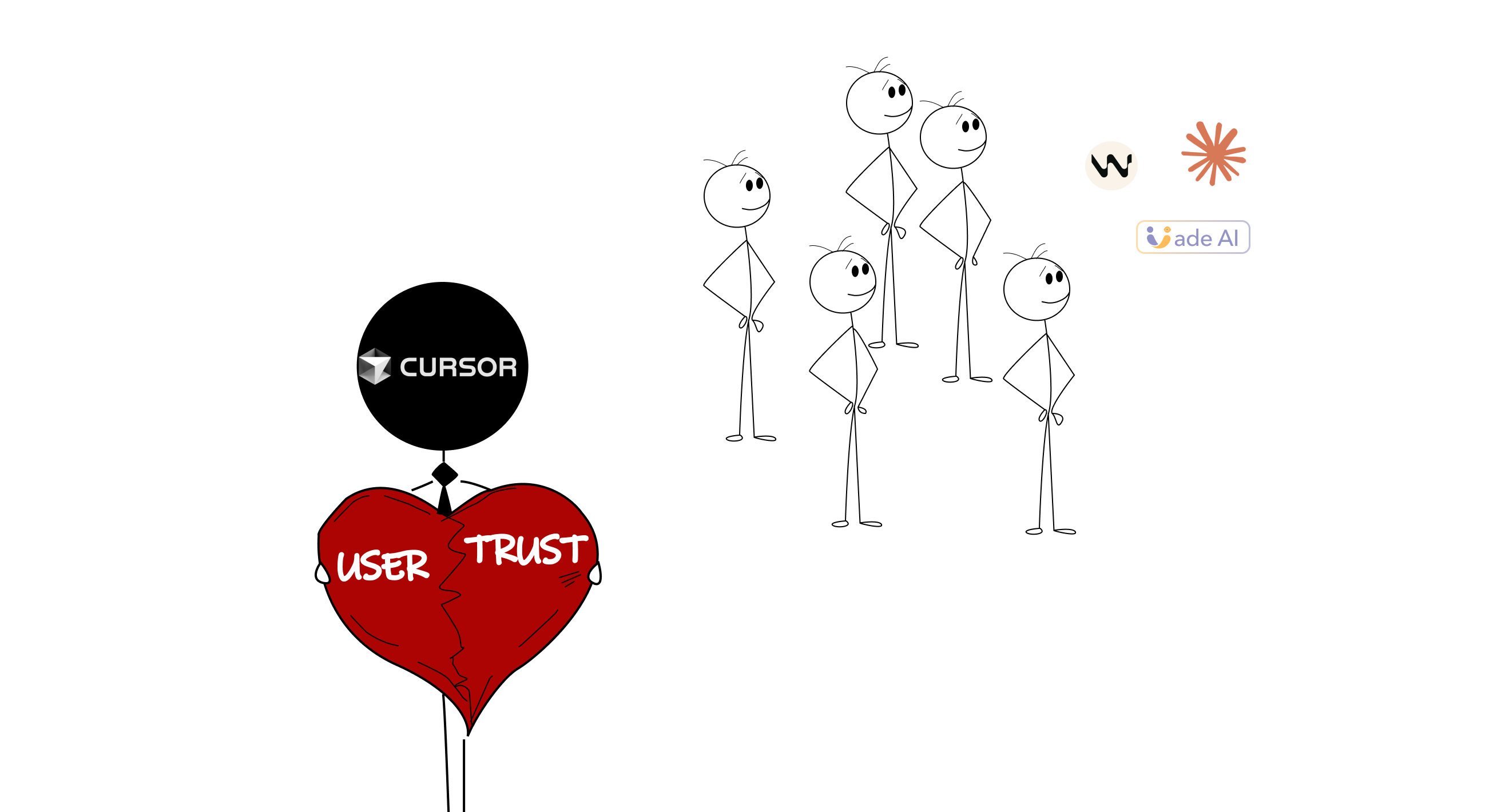
The lesson isn't that they raised prices – it's that they broke promises.
As they acknowledged in their mea culpa:
We missed the mark. We recognize that we didn't handle this pricing rollout well and we're sorry. Our communication was not clear enough and came as a surprise to many of you.
They're offering refunds and promising better communication, but the damage is done. Developers are already migrating to Claude Code, Windsurf, and other alternatives. Trust, once broken, is incredibly hard to rebuild.
Building for the AI-Native Future
The future belongs to companies that can navigate AI economics honestly and transparently. This means:
- Pricing that reflects real costs and value
- Clear communication about usage and limits
- Sustainable business models that scale with success
- Trust-first relationships with customers
The old SaaS playbook of "unlimited everything" is dead. The new playbook requires founders to be honest about costs, transparent about value, and creative about pricing models that work for both sides.
The companies that figure this out first will win. The ones that keep pretending marginal costs don't exist will keep facing their own Cursor crises.
The question isn't whether you'll hit this pricing wall – it's whether you'll see it coming and plan accordingly, or whether you'll blindside your customers and watch them flee to smarter competitors.
The choice is yours. Choose wisely.

What's your experience with AI pricing challenges? Have you found sustainable models that work for both founders and customers? Share your thoughts – the entire ecosystem is still figuring this out together.
